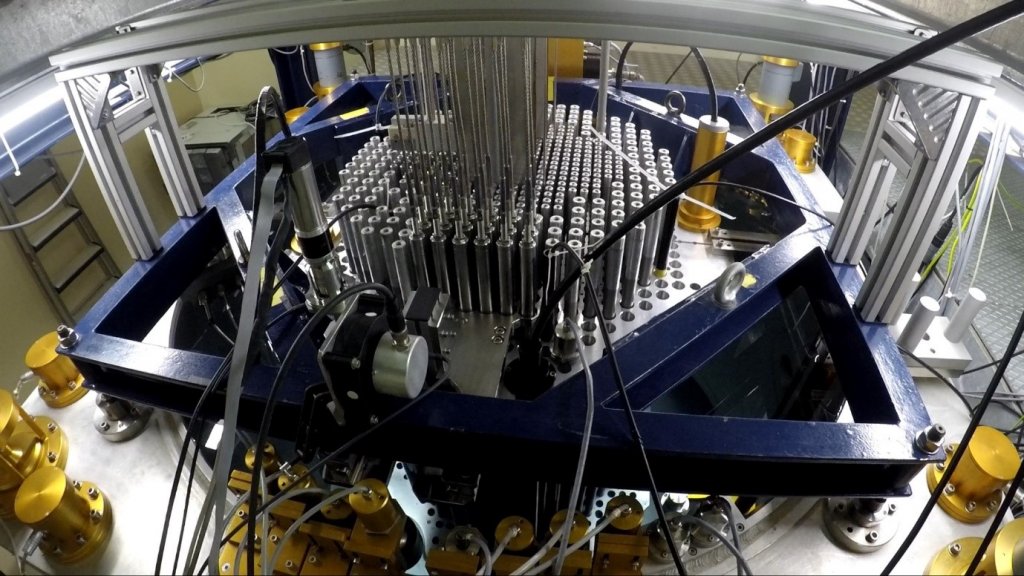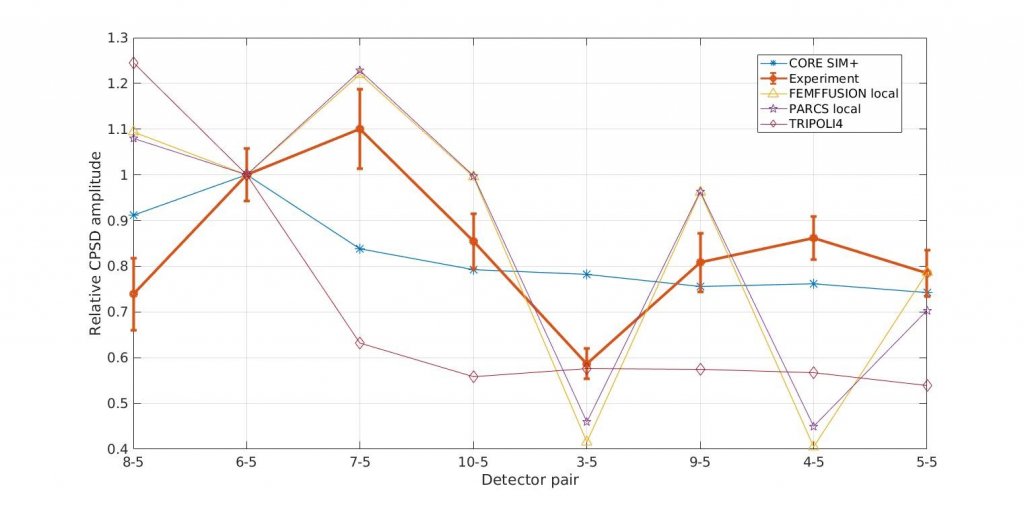In Work Package 1 (WP1) of the CORTEX project, the main objective is to develop methods and models for the calculation of neutron noise in nuclear reactors. The efforts of WP1 are planned to be used in the analysis of neutron noise measurements from nuclear power reactors within Work Package 4. However, these computational capabilities first need to be validated so that their range of applicability and their reliability can be evaluated.
For the purpose of validation, Work Package 2 (WP2) targets the generation of high quality neutron noise experimental data. Three experimental campaigns (out of the six planned) have been carried out, two at the CROCUS reactor (EPFL) and one at the AKR-2 reactor (TUD). A video of the controlled oscillations of fuel rods in CROCUS can be found in Figure 1.

On the hardware side, the in-depth characterisation of the acquisition chains of TUD and EPFL against an industry grade system provided by ISTec led to positive results ensuring that the experimental data sets gathered during the measurements are suitable for code validation.
Large efforts were dedicated to processing the experimental data generated during the first campaigns. One of the key objectives was to determine if any deviation from the point kinetics behavior of the noise in the CROCUS and AKR-2 reactors could be observed. Due to the small size of both reactors, such deviation is not expected to be large. Trends were observed in the experimental results pointing in that direction. However, at this early stage, no definitive conclusion could be drawn, as uncertainty quantification is still on-going. The second experimental campaign in CROCUS, carried out during the first two weeks of October 2019, was designed with the help of the modelers of WP1 to better target the locations of interest, and to reduce uncertainties and sources of biases.
Following the delivery of the first experimental data, the validation of the noise simulators developed in WP1 also started. The required ingredients are falling into place as a methodology to quantify the computational uncertainties of the noise simulators has been released recently and will be applied to the modelling of CROCUS and AKR-2. Frequent exchanges between the modellers from WP1 and the experimentalists from WP2 have allowed to make progress towards the understanding of the experiments and the assessment of the accuracy of the computational models.

An example of the validation work performed so far, is shown in Figure 2 where the neutron noise measurements of the COLIBRI experiment No. 12 are compared with results calculated with CORE SIM+, FEMFFUSION, a modified version of PARCS for neutron noise applications, and the noise solver built for the Monte Carlo code TRIPOLI-4®. Even though preliminary, the results are encouraging and should lead to first-of-a-kind publications in the third and fourth years of CORTEX.
By Paolo Vinai & Mathieu Hursin

